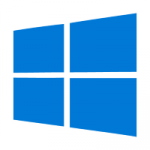In a somewhat surprising move, Microsoft is releasing more updates for Windows XP today. To be clear, Microsoft had already created these updates for corporate (paying) clients. All they’re doing is making those updates available to the rest of us. While the updates are welcome to those still running Windows XP, one wonders how paying customers feel about it.
Here’s Microsoft’s explanation: “In reviewing the updates for this month, some vulnerabilities were identified that pose elevated risk of cyber attacks by government organizations, sometimes referred to as nation-state actors or other copycat organizations.” What that probably means is that Microsoft believes — along with the rest of us — that last month’s WannaCry threat was only the beginning of the havoc coming our way in the wake of The Shadow Brokers‘ leaks. The bit about ‘government organizations’ is presumably to get people to take notice.
That announcement is also somewhat misleading, in that it talks about ‘enabling Windows Update’ in supported versions of Windows, when in fact they’re referring to automatic updates. Further, automatic updates in Windows 10 cannot be disabled.
From the June 2017 security update release announcement: “we recommend those on older platforms, such as Windows XP, prioritize downloading and applying these critical updates, which can be found in the Download Center (or alternatively in the Update Catalog).”
The Download Center site doesn’t work particularly well in Internet Explorer 8, the version my poor old Windows XP Virtual Machine is stuck with. The page does show a prompt to try Edge, which is not particularly helpful as Edge won’t run on Windows XP. Okay, how about the Update Catalog? All I get there is ‘The website has encountered a problem’.
The Download Center works a lot better in Chrome, but clicking the Microsoft Update link only tells me that I have to use Internet Explorer for that. Entering the Windows category just invites me to visit the Update Catalog. That site also seems to work with Chrome, but it’s basically just a search form. What do I search for to get the available updates for Windows XP? Searching for ‘Windows XP’ produces 870 results. Sorting the list by date shows the most recent update was in 2014.
A post on the Technet site provides additional information about the vulnerabilities: Microsoft Security Advisory 4025685 – Guidance related to June 2017 security update release. Fifteen vulnerabilities are addressed, almost all of which are flagged as Critical. But there’s nothing on that page about how to install the updates on Windows XP.
The general guidance page links to additional guidance pages, one for supported versions, and another for older versions of Windows.
The page for older versions starts by pointing out that “All security updates Microsoft provides do not check Windows Genuine Advantage status.” That means even people running bootleg copies of Windows XP can install these updates. It goes on to say “For customers on these older platforms, the following table provides information to manually download applicable security updates.”
So installing these updates on Windows XP involves manually downloading them with the links provided on the Microsoft security advisory 4025685: Guidance for older platforms page. Some of the links go to the Update Catalog, and some involve additional navigation, but I was able to use Chrome to download and install all twelve of the updates linked from the guidance page on my WinXP VM. Not exactly convenient, and certainly not fast, but it did work.
Microsoft security advisory 4025685: Guidance for supported platforms includes a summary of the month’s updates for supported software. Numerous vulnerabilities are addressed, affecting the usual software: Windows, Office, Internet Explorer, Edge, Silverlight, Skype and Flash. Extracting the complete details from the Security Update Guide is still annoyingly awkward, and the release notes are rather light on details.
 Adobe normally releases patched versions of its main products on the second Tuesday of each month, to coincide with Microsoft’s update schedule. Occasionally they will depart from this schedule, as they have with the new versions of Reader/Acrobat announced on August 29.
Adobe normally releases patched versions of its main products on the second Tuesday of each month, to coincide with Microsoft’s update schedule. Occasionally they will depart from this schedule, as they have with the new versions of Reader/Acrobat announced on August 29. boot13
boot13 Since the release of Windows 10, Microsoft has received feedback from certain users, to the effect that the O/S doesn’t meet the “demanding needs of mission critical and compute intensive workloads.” It either doesn’t detect, or simply doesn’t use the capabilities of some types of high-performance hardware.
Since the release of Windows 10, Microsoft has received feedback from certain users, to the effect that the O/S doesn’t meet the “demanding needs of mission critical and compute intensive workloads.” It either doesn’t detect, or simply doesn’t use the capabilities of some types of high-performance hardware. Besides fixing
Besides fixing 